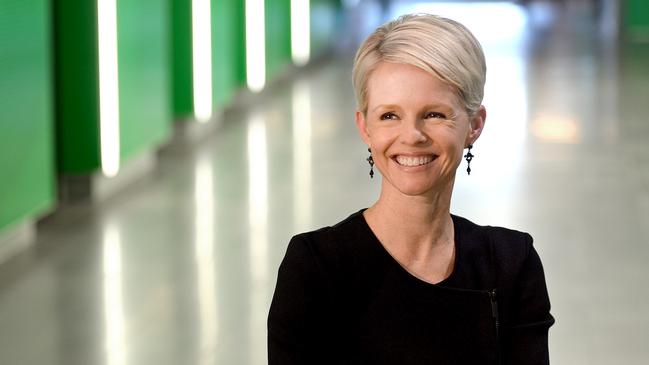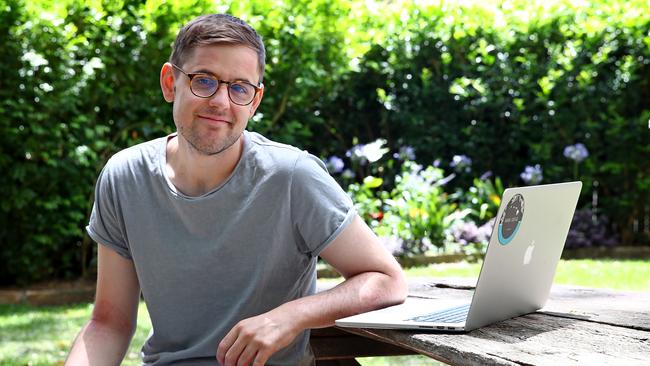Expert tips on how to invest in the sharemarket for the first time
The Australian sharemarket has had a rollercoaster ride as many people started trading for the first time this year. Here, experts reveal how to grow your cash.
Business
Don't miss out on the headlines from Business. Followed categories will be added to My News.
Investors have had a rollercoaster ride in 2020 and during the pandemic many threw their money into the Australian sharemarket for the first time.
The ASX200 plummeted by 30 per cent in just three weeks from late February — the biggest fall on record — and the volatility certainly stayed around during COVID-19 before the sharemarket finally made a dramatic rebound.
During these tumultuous times it effectively meant the sharemarket went on sale, resulting in many eagle-eyed investors pouncing.
Share trading platform nabtrade’s director of investor behaviour Gemma Dale said 2020 saw a shares trading boom and “a 30 per cent uplift in the total number of clients over the year”.
So for would-be investors who are still considering investing in shares and hopefully watching their money grow we’ve asked
the experts how to get started.
OPEN A TRADING ACCOUNT
This is the first step to getting started and it will allow you to trade stocks at your own leisure.
There are plenty of online trading sites, including CommSec, nabtrade and Bell Direct to name a few.
It’s free to open up a share trading account and it will give you access to a wealth of information so you can make educated decisions before you invest.
“Go to nabtrade or any of the others (trading platforms) that are free to open and you can buy and sell on there,” Ms Dale said.

“We have huge amounts of research about pretty much every stock you might contemplate buying both on the ASX and also in the US, UK, Germany and Hong Kong.”
From here you can transact on the sharemarket and payments can be made via an automatic direct debit from a linked nominated bank account when buying and selling stocks.
DO YOU RESEARCH
Pick up a newspaper and go to the business section.
Scroll the stocks pages and read up on companies you’re interested in.
Financial adviser Scott Haywood it’s important you have a basic understanding of what you are investing in rather than going in blindly.
“The newspapers publish the 12-month high and low share prices of companies and the volume of stocks,”
he said.
“It’s always good to look at this line in the paper — if there’s a decrease or increase in volume it generally means there might have been an announcement and something happening.
“If there hasn’t been
much movement the
stock has been sitting dormant and nothing has been happening.”
In your online share trading account you can
also set up a “watch list” which allows you to
monitor the movements of share prices.
Dale said this will help you make informed decisions before trading stocks.
“Pick a handful of things you might be interested in buying at some point, put them on a watch list and see how they go,” she said.
“There is also lots of information and tools you might not understand such as dividend yields.”
HOW MUCH MONEY NEEDED TO START/COSTS INVOLVED
To purchase shares in an ASX-listed company the minimum purchase amount is $500.
Despite this Mr Haywood said ideally you should have at least $2000 to get started.
“The brokerage fee to purchase stocks is going to vary, for example if you’re doing it online you want to be paying about 1 per cent in fees, so $20 on an investment of $2000.”
Minimum brokerage usually starts at about $10 and when you sell shares you will also be hit with a charge.

For those who hold shares longer than 365 days, there is a 50 per cent capital gains tax discount on any profit made on their sale.
CommSec’s executive general manager Richard Burns also said it’s a good idea to have a diversified portfolio.
“It really does help to have a diversified portfolio, even if that’s four of five different stocks to get started,” he said.
“That helps people understand the nuances of the market.” Trading on the ASX can be done between 10am and 4pm Monday to Friday (AEST).
DIVIDENDS
A dividend is when a company pays out profits to investors — it’s a cash payment and is usually made once or twice a year to shareholders.
Mr Burns said the importance of dividends depends on a person’s investment goals.
“For some people dividends are very important because they are relying on the income, it’s the equivalent of getting rent on an investment property,” he said.
“We know others are not as fixated on the dividend and are much more keen to have longer term capital growth.”
During the pandemic some companies paused paying dividends.
Some companies also allow shareholders to use a dividend reinvestment plan — this means instead of receiving a cash payout the dividend returns are reinvested in the company to buy more shares. “Not all companies offer that so people need to know what companies have done in the past,” Mr Burns said.
MICRO INVESTING
Successfully choosing individual stocks that perform well can be tough even for the most-seasoned investor so as a result many Australians — particularly younger investors — are choosing to micro invest.
This allows the trader to invest bite-sized chunks of cash, some as little as $50, and still have their finger in the investing pie.
Popular sites and apps that allow you to do this includes CommSec Pocket, Raiz and Spaceship.
Town planner Jacob Hatch, 27, from Summer Hill in Sydney, has been investing in the sharemarket since he was a teenager but said picking good-performing stocks proved too hard.
“I had some very varied experiences with return so I started to look at ETFs (exchanged-traded funds) and index funds,” he said. “I realised this was better for investment return over the long term that wasn’t super risky.”

He signed up to CommSec’s Pocket where investors can tip in as little as $50 at a time and choose from seven themed investment options including the Aussie Top 200, Global 100 and Emerging Markets options. Hatch said he had about $10,000 when he started investing and now tips in another $1000 a month and is hoping to watch his funds grow.
Trades cost $2 for up to $1000. Exchange-traded funds are a low-cost way to invest money in across a mix of stocks instead of one individually-listed company.
AT MARKET PRICE VERSUS LIMIT
When making a purchase traders will be asked if they want to buy at a price limit or at market — this is the difference:
Price limit: This is a maximum price you set that you will pay per share and you will be put in a queue at the exact price.
At market: This is when shares are purchased immediately at the price that is available at the time and these transactions are usually done much faster than at price limit.
Mr Haywood said if you’ve done your research and like the company you’ve purchased then if you feel the price is right just buy at market. “Don’t wait for a certain price and miss out on the stock that might go up,” he said.
Trading on the ASX200 can be done between 10am and 4pm Monday to Friday AEST,





